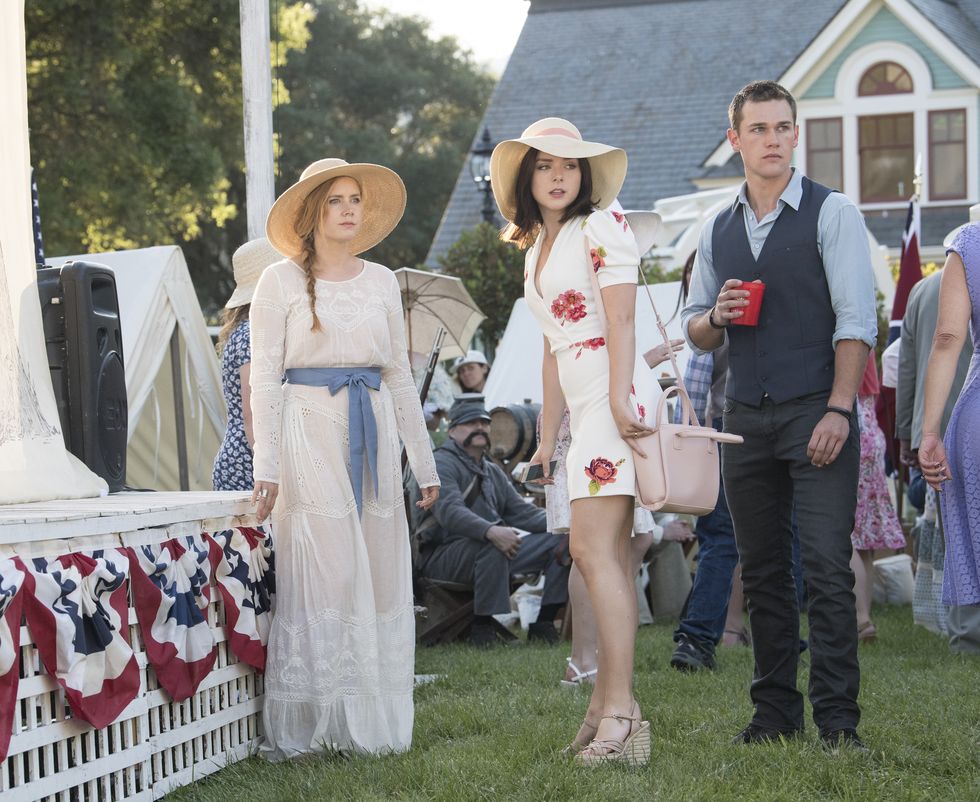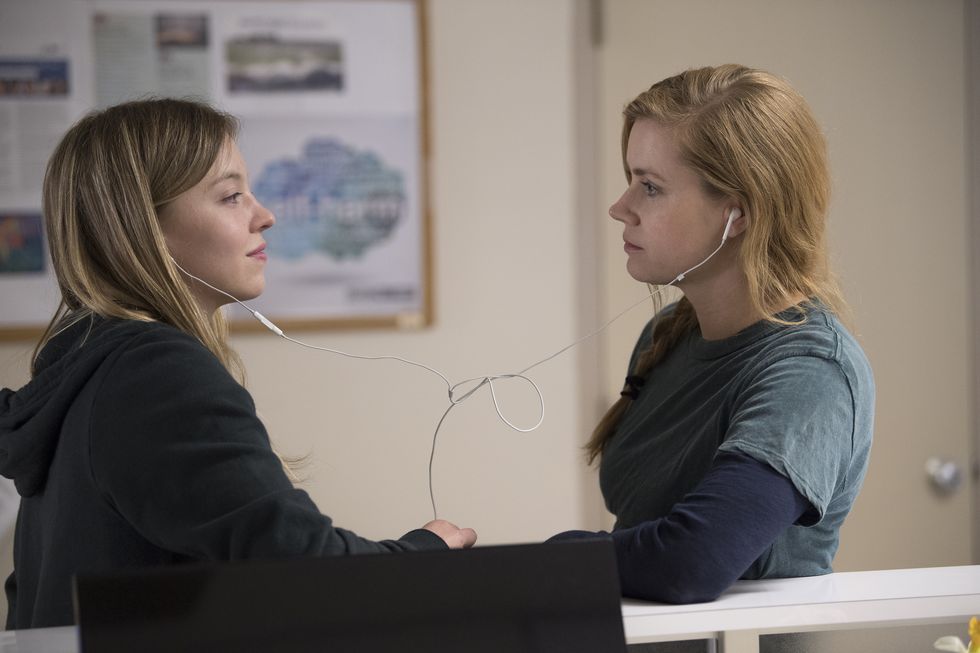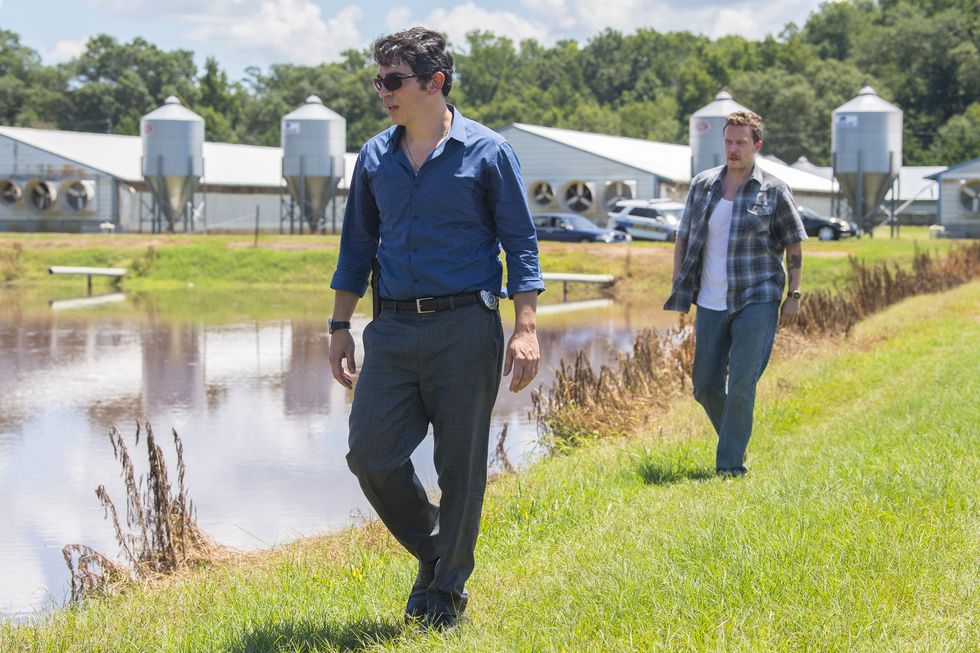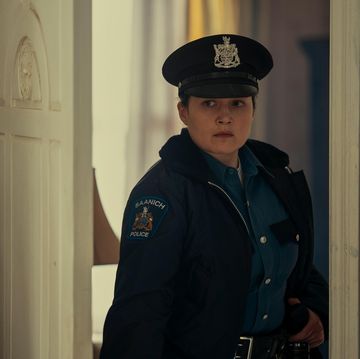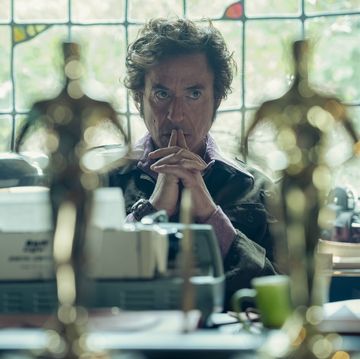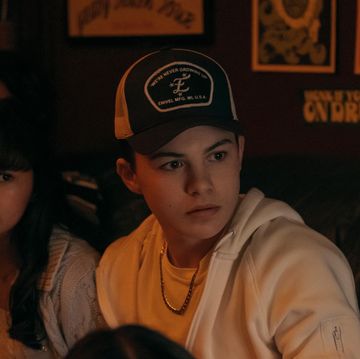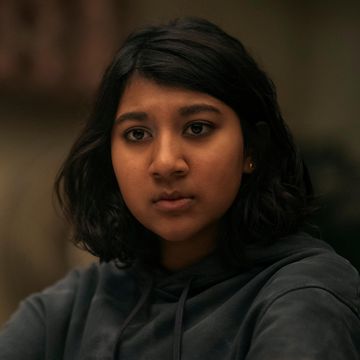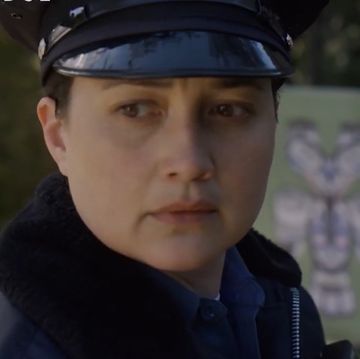Screen adaptations are notoriously tricky business. All too often they fall flat and disappoint the people who loved the original source material. That's why it is such a welcome relief to see HBO got it right with Sharp Objects.
Most of the differences between the book and the show stem from the fact that while Gillian Flynn's novel is told in first-person through Camille Preaker’s (Amy Adams) perspective, the show has the freedom to let us occasionally see what happens in other characters’ lives when Camille isn’t present. She’s a key part of almost every scene, though, so audiences are still very much experiencing the creepy world of Wind Gap through her eyes.
Most importantly, the show kept all the crucial components of the central murder mysteries the same, so book readers weren’t thrown for a loop during the finale.
While the miniseries didn’t veer too far from Flynn's novel, these were some of the most noticeable changes between the book and HBO series.
Curry never went to Wind Gap to save Camille in the book.
In the final episode of the miniseries, it was Camille’s editor, Curry, who convinced Chief Vickery to search the Crellins’ house and went himself to make sure Camille was okay. Curry never goes to Wind Gap to save Camille in the book, but the novel ends with Camille going to live with Curry and his wife, Eileen, after Amma is arrested.
In the novel, Richard doesn't reveal to Camille that Adora killed Marian.
The major revelation from the seventh episode was that Adora has Munchausen syndrome by proxy, which means she purposely made her children sick in order to receive attention and empathy from others. Adora had slowly poisoned Marian to death, and was now repeating the process with Amma. In the show, Richard is the one to bring this to Camille’s attention by placing Marian’s medical file in her car, which leads to Camille confronting Adora’s former best friend, Jackie, for information. In the book, Camille came to the realization on her own after Adora started to use the same poison on Camille that she was currently using on Amma. Camille still gets confirmation from Jackie, but then uses that information to seek out Marian’s medical file on her own rather than getting it from Richard.
Camille’s big meeting with Jackie was much more hostile in the miniseries.
Once Camille starts to figure out that Adora was responsible for Marian’s death, she goes to Jackie to have her worst fears confirmed. It’s much clearer in the show how much Jackie knew, and Camille becomes furious with her for not intervening to save Marian. The show also added in the new detail of Jackie revealing that Adora had Marian cremated after a very public open casket funeral, which sends Camille over the edge. In the book, Camille’s conversation with Jackie was much calmer, and for some reason she never became upset with Jackie. While the scene in the show ends with Jackie yelling at Camille for not understanding, the scene in the book ends with Jackie encouraging Camille to leave Wind Gap to save herself.
John Keene was never arrested in the book.
Natalie’s brother, John Keene, is high on the suspect list for the town murders, but the storyline where Natalie’s bike is found at the pig farm where John used to work was added into the show. In the seventh episode, Chief Vickery and Richard find John in the hotel room with Camille when they go to arrest him, but in the book they tracked him down in the hotel room simply because John’s mother told the police he never came home the night before.
Alan’s weird obsession with his stereo system was never mentioned in the book.
The addition of Alan’s stereo system was most likely a way to add tension to some of the more ominous moments in the show, while also serving as a natural way to have a soundtrack, the same way Camille listens to music on her iPod. It also had the added effect of making Alan seem even creepier than he did in the novel.
The insinuations of some illicit affairs were created for the miniseries.
Throughout the show, it’s implied that Adora might be having an affair with Chief Vickery due to his frequent house visits and Alan’s frustration with them. There was also an odd moment between Amma and her drama teacher, Kirk Lacey. She grabs his hand in the hallway at school, and he looks visibly uncomfortable with the nature of their interactions. None of this happened in the book, and it was likely added in to create more red herrings.
Calhoun Day was created just for the miniseries
Calhoun Day, the over-the-top Southern party that commemorates a disturbing piece of town history from the Civil War, never actually happened in the book. Hosted by Adora, Calhoun Day “celebrates” the story of a young Wind Gap woman named Millie Calhoun who refused to give up her husband’s location to Union soldiers, even after they brutally raped her and caused her to have a miscarriage. But ultimately, the party mainly serves as an excuse for the people of Wind Gap to gather on the Crellin family's lawn to drink and gossip. Getting all the characters into one place for such an elaborate event led to some interesting developments that didn’t take place in the novel: Bob Nash and John Keene get into a fistfight, Amma runs away from the party, and Adora tells Richard about Camille’s past.
Camille’s stay in rehab is a much larger part of the show than it was in the book.
A significant portion of the third episode of the miniseries is dedicated to uncovering what happened to Camille after she voluntarily checked herself into a psychiatric rehabilitation facility to deal with her cutting. Camille’s memories show that she developed a close relationship with her teenage roommate, Alice, who is never named in the book. In this flashback, Camille's life is altered when Alice dies by suicide while the two share a room in rehab. After seeing Alice’s lifeless body, Camille ran to the bathroom and broke off a piece of the toilet to carve the word “fix” into her arm. In the book, Camille barely describes her time in rehab, and she appears to have had a very detached relationship with her unnamed roommate.
The show offers more insight into Alan and Adora’s bizarre relationship.
In both the book and the show, Alan Crellin is depicted as soft-spoken and rather sycophantic, catering to whatever will make Adora happy. Because the book is told from Camille’s perspective, the reader only knows the narrator's assumptions about Alan and Adora’s marriage. The show mostly confirms Camille’s belief that there’s a lack of physical intimacy between her mother and step-father. When Alan tells Adora that maybe he should spend the night with her after she injures her hand, she coldly replies, “that won’t be necessary.” Beyond that, the miniseries also gives a brief glimpse into Alan’s frustration with his home life as he steps outside to muffle a scream. Alan’s frustration with his home life is much more apparent in the miniseries than in the book, showcased with him stepping outside to muffle a scream at one point. It’s also clearer in the miniseries that he’s aware of Adora poisoning their children, and while he seems conflicted about it, he enables her actions by turning a blind eye on multiple occasions.
In the HBO series, some aspects of Camille's childhood are shown in greater detail, while other parts are given less attention.
In the book, Camille frequently reflects on her painful adolescence as a way of trying to make sense of how she got to this point in her life. The flashbacks are crucial to understanding why she now lives a mostly isolated life, and her history of self-harm. In the show, we see more clearly how a young Camille was affected by her half-sister Marian's death. Few details are given about Marian's funeral in the book, but in the show, Camille is shown having a meltdown trying to wipe the lipstick off her sister's body, and has to be carried out kicking and screaming. On the other hand, Camille's traumatic memories of early sexual experiences and her frustration with not knowing anything about her biological father are big parts in the book, but have yet to really be addressed in the show.
Detective Richard Willis takes on more of a lead role in the show and is more present throughout the story.
"Kansas City", as Richard is not-so-endearingly referred to by the residents of Wind Gap, is only shown through his interactions with Camille in the book. The miniseries shows more of the detective's work on the murder cases, including one particularly graphic new scene where he pulls teeth out of a decapitated pig head to see how strong the murderer had to be to use the same method on Ann Nash and Natalie Keene. The change was likely made to make more use of Chris Messina's talents and to further endear audiences to Richard by showing that he's not as incompetent a detective as the rest of the town would like to believe.
Camille lives and works in St. Louis in the show as opposed to Chicago, where she works in the book.
It hasn't had much of an effect on the storyline, but Camille worked at the Chicago Daily Post in the book instead of the St. Louis Tribune. Both papers are small, fictional metro-dailies, but the change could have been made to show that Camille wasn't successful enough as a reporter to make it to a bigger market and that she didn't end up that far away from home.
The scene at Natalie Keene's funeral was changed in the show, but for a good reason.
As Camille stands up at Natalie's funeral service, she rips the black dress she borrowed from her mother and runs out of the church. It's a seemingly innocuous addition to the story that didn't appear in the book, but later, we see her sewing sewing the dress back together and driving her finger into the needle—another hint at the character's desire to self-harm.
The HBO series depicts Camille's relationship with the Keene family as less contentious.
A major roadblock to Camille's reporting in the book is that Natalie's parents, understandably, don't want to speak with her about their daughter's death. Camille gets yelled at several times on the phone when asking for quotes, or when Mrs. Keene hears what Camille plans to print. In the show, Camille openly talks about the circumstances of Natalie's murder with Mr. Keene at the wake, and hasn't interacted Mrs. Keene at all.


